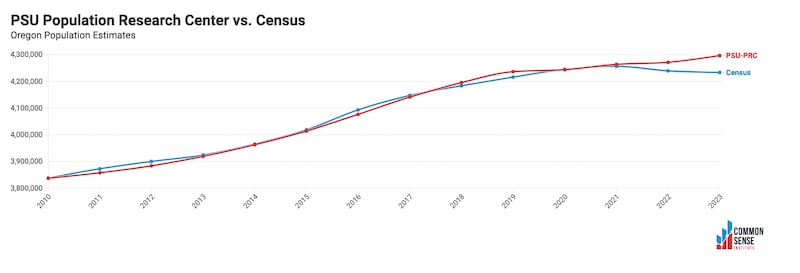On Nov. 15, the Portland State University Population Research Center issued its revised estimate for Oregon’s population for 2023, knocking its previous estimate down by about 50,000 residents.
That revision, part of PSU’s annual process, puts the university’s number closer to different and lower numbers issued earlier by the U.S. Census Bureau.
An October report from the think-tank Common Sense Institute Oregon highlighted the divergence:
“While the U.S. Census Bureau reports a population decrease in Oregon for the past two years, figures from Portland State University’s Population Research Center (PSU-PRC) present a different narrative,” the organization wrote in an Oct. 28 report. “Contrasting with the Census data, PSU-PRC’s estimates for the last two years indicate a population increase. For example, in 2023, PSU-PRC estimated Oregon’s population at 4,296,626, significantly higher than the Census’s reported 4,233,358.”

Yesterday, PSU dropped its estimate for 2023 to 4,246,688, eliminating most of the gap shown in the chart above.
Economists have been closely watching the state’s population, which grew reliably for most of the past four decades but has stalled and begun to contract in the past couple of years.
Related: After Decades of Growth, Oregon’s Population Is Shrinking. A Top Economist Examines Why
The import of PSU’s downward revision is a slightly bleaker picture as the state prepares to release its quarterly economic forecast this coming week.
Commenting on the downward revision on X, Josh Lehner, a former state economist, noted the new PSU numbers mean about 25,000 fewer Oregonians are available for work—and to pay taxes. “It’s not catastrophic but Oregon is on a slower, smaller trajectory than previously thought,” Lehner wrote.

